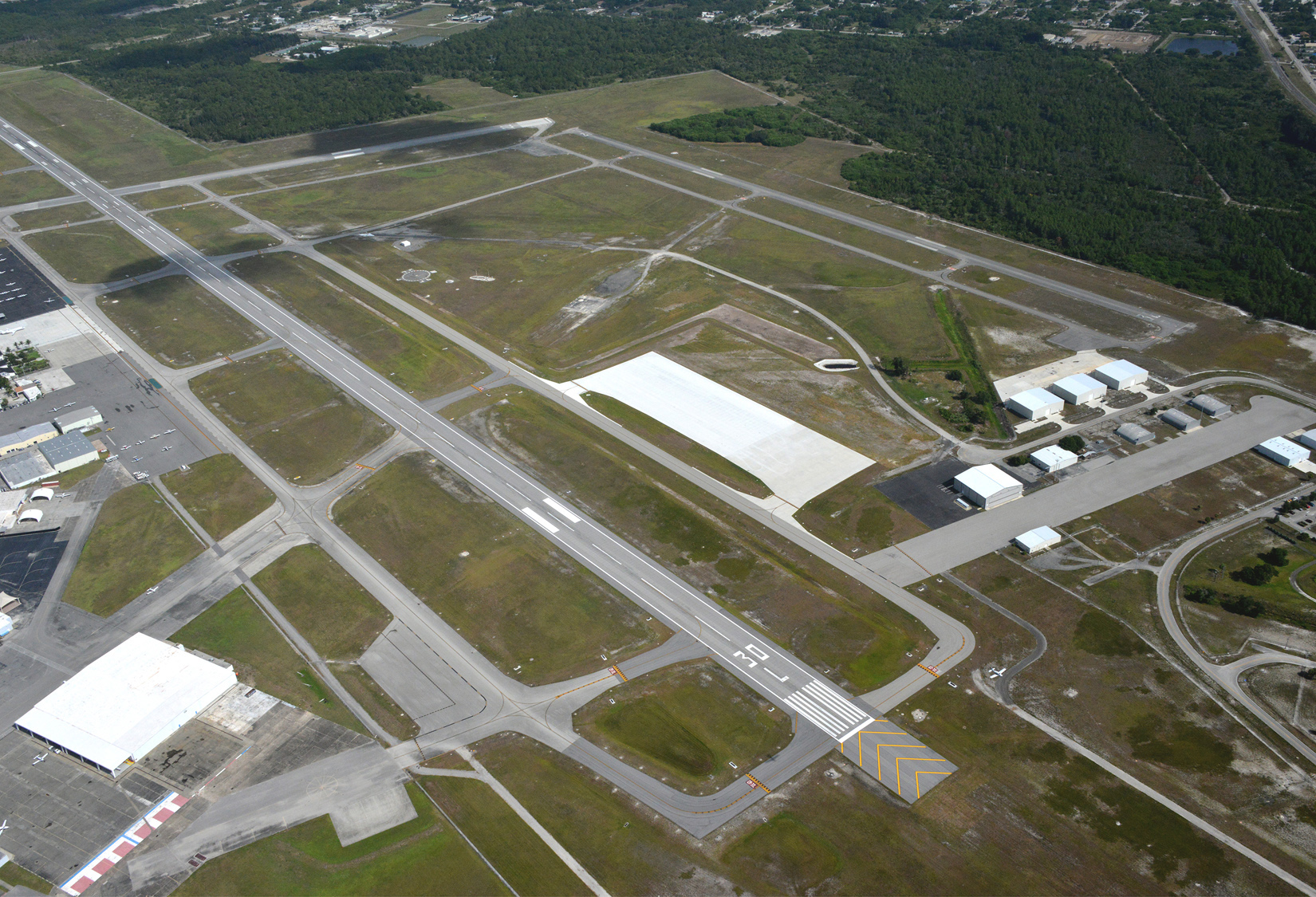“It is not the beauty of a building you should look at; it is the construction of the foundation that will stand the test of time.” – David Allan Coe
Behind every exceptional runway or taxiway project or solidly built structure is an experienced resident project representative (RPR). High-quality construction observation relies on an RPR, who monitors construction activities daily for accordance with the contract documents and construction plans. RPRs perform construction engineering observation to reduce the potential for costly defects or deficiencies. As a critical part of the construction team, an RPR can save the client money by reducing or eliminating the need for change orders, detecting the use of substandard or unapproved construction materials and preventing project delays.
Top-notch construction observation in action
Hanson’s recently completed rehabilitation of the main runway at Vero Beach Regional Airport in Florida is an example of an RPR success story. The project included milling and overlaying the aging runway asphalt and providing electrical, lighting and marking upgrades.

With the project starting in November 2021 and the contractor given 224 days to complete it, the primary challenge was finishing the runway before an air show in April 2022. After helping create the design, project plans and contract specifications, the RPR met on-site daily with the contractor to forecast the construction progress. To speed progress, the project team periodically adjusted the order of the project’s phasing and the work completed. The RPR coordinated material substitutions, which met the contract specifications, in certain areas of the runway to offset material delays caused by supply chain issues.
Thanks to the client’s support, efforts of the construction observation team and RPR working daily with the contractor, the runway project was completed within budget, approximately 50 days ahead of schedule and 45 days prior to the air show.
Making quality top priority
A successful RPR is involved in all phases of a project, starting with the initial design. By examining the design plans, an RPR can assist the project engineer by checking the constructability of the project, detailing the contractor haul routes, reviewing the project phasing and providing input on the project schedule. Experienced RPRs can also help keep the closures of airport operational areas at an acceptable level.
The amount of time an RPR is required on-site during a project’s construction phase depends on a project’s complexity. Highly complex projects, such as runway rehabilitations that include safety area improvements, lighting and navigational aid upgrades and runway grooving, usually require full-time RPR services. A less complex project, such as a small box hangar, may only require the RPR to be on-site during construction milestones.
An RPR also holds progress meetings during construction. These meetings should always include the contractor and the client’s designated staff to keep all stakeholders fully informed during the project. Any unplanned or unforeseen challenges that arise between those meetings should be discussed with the client at the earliest possible time.
Additionally, an RPR typically reviews and approves payment applications; drafts and recommends proposed change orders, work change directives and field orders; verifies that material and equipment certificates, operation and maintenance manuals and other data required by the specifications have been provided to the client; and participates in substantial and final completion assessments.
What makes a great RPR?
- Experience: The RPR must have first-hand knowledge of a wide variety of airfield construction projects, as well as the specific type of construction on their assigned project. An RPR may have extensive experience in light commercial construction; however, they might not have the experience for the construction of a terminal building.
- Engagement: An excellent RPR spends a great deal of time on the site, reviewing and documenting construction activity and conditions. They report discrepancies or unforeseen events to the engineer so issues can be promptly resolved. An RPR who sits in the job trailer all day without interacting with the contractors lacks the necessary knowledge and awareness of what is happening on the job.
- Organization: On large and complex projects, an RPR prepares many reports, and reviews submittals and requests for information. They must be able to manage this information effectively and keep it organized for use during the project and afterward. This level of organization enables the RPR to provide a complete set of project records to the owner.
An experienced, engaged and organized RPR can be the difference between an average and award-winning project. Hanson’s RPRs are ready to help you write your next project success story.
Mike Moon is an aviation staff consultant at Hanson who can be reached at mmoon@hanson-inc.com.